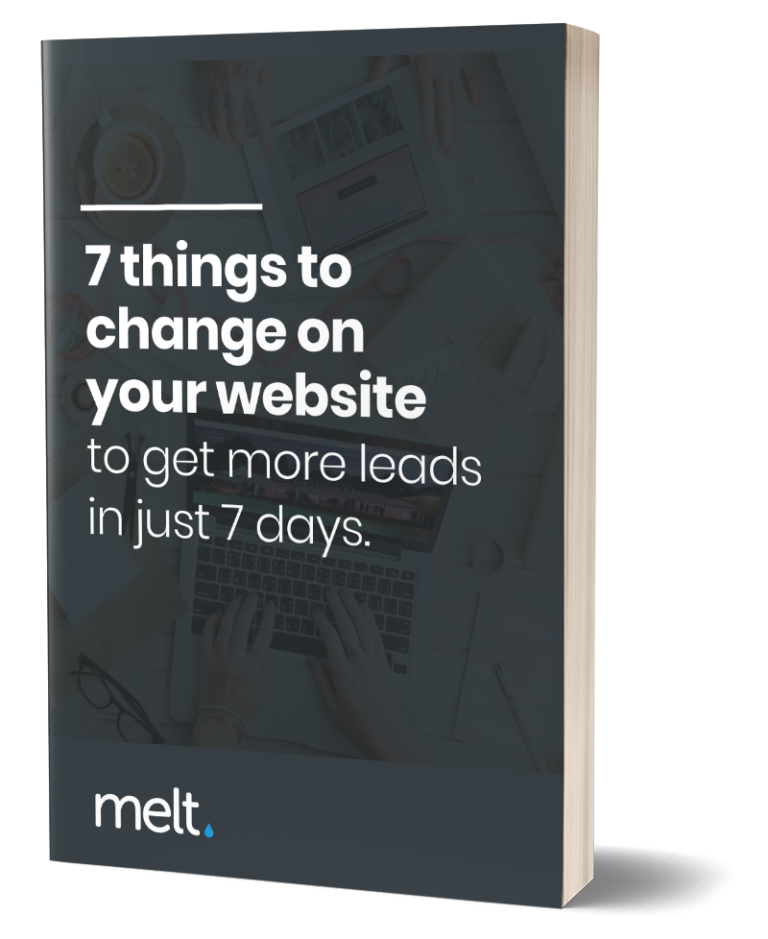Importance of a small business website
Your company website is crucial for attracting and converting potential customers into paying customers.
Your website serves as your business’s online presence and is often the first point of contact for potential clients. A well-designed website can help build trust and credibility for your business, showcase your products or services, and provide essential information to your target audience.
It’s also a valuable tool for marketing and customer acquisition, allowing you to reach a wider audience and drive more sales.
Here are the important features to include in your small business website
Clear and professional web design
Your small business website should have a clean and professional design to make a positive impression on your visitors. A clutter-free layout and visually appealing design will help visitors find the information they need quickly and easily. A professional design also builds trust and credibility with potential customers, which can lead to higher conversion rates.
Here are a few tips for improving and achieving a great website.
Make sure all your important elements are above the Fold.
With most people working on laptops or mobiles these days, your main navigation, your headline, and your call to action should all be easy to see without scrolling.
Massive images with no clear USP or information are a waste of space. They take up much real estate and slow down your page.

Discover where your website is holding you back with a free, personalized audit report. Uncover what's keeping your site from reaching its full potential and start taking action today!
A simple two-column or centralised header will always outperform a page on which the user must scroll too far.
Design for the natural eye movement
Our eye is trained to move from left to right in a z-pattern. So when we first look at a site, we go to the logo and scan left across the navigation, Down and left again.
These design principles also apply to other pages like your about, service, and product pages. So, it is important to follow this pattern with your content, calls to action, and lead generation forms.
Images
Images can help your users to recognise what your business does quicker and subconsciously build trust.
Use relevant images to what you do:
If you are a coaching business, images of you working with people or people in a group setting help highlight this.
If you’re a landscape gardener, use before and after pics and images of nicely designed desirable gardens.
If you’re a Kitchen makeover company, here are examples of your kitchens and before and after pics.
I think you get the idea 🙂
Having your own images is always better. Nowadays, getting a photographer to take images of your team in the business doing what you do can be very affordable. You could probably even do it with your phone camera; they’re that good now.
But this isn’t always possible so that stock imagery can be used. The quality of stock images has massively improved, so finding images should be easier.
Here are a few places to get stock imagery. Here are a few you can use: Pexels, Adobe Stock, and Big Stock.
Images of real people looking happy have been proven to boost conversions, and directing users to key areas with images can help you convert more.
Lead Generation Forms
Lead generation forms are crucial for businesses looking to capture valuable information about potential customers.
These forms are a gateway to building relationships with leads, from basic contact details to specific preferences and interests.
By carefully crafting a user-friendly form with clear expectations and incentives for completion, businesses can increase their chances of converting leads into loyal customers.
Remember, the key is to balance gathering the necessary information with respecting the user’s time and privacy. So, don’t overlook optimising your lead generation forms for maximum effectiveness.
A fast Loading website
Visitors to websites expect a seamless and efficient experience when accessing information online. A fast loading website improves user satisfaction and enhances search engine rankings.
Web developers can ensure that pages load quickly and smoothly by optimising images, minifying code, and leveraging browser caching. Prioritising speed and performance in the digital age is essential to staying ahead of competitors and providing users with the best online experience.
Website speed optimisation is important to search engines because it determines a website’s ranking in search results. Loading times play a significant role in user experience and can impact bounce rates, ultimately affecting organic traffic. Search engines like Google consider page speed a ranking factor, prioritising websites with fast loading times. Improving website speed can enhance user experience, increase time on site, and ultimately boost search engine rankings.
By prioritising website speed optimisation, businesses can improve their online visibility and drive more organic traffic to their site.
If you have a WordPress website and need help speeding it up, we recommend speaking to a professional experienced speed optimisation team.
Mobile responsive website
Ideally, a small business website should be easily accessible on all devices, including smartphones and tablets.
Research has shown that 57% of internet users will only recommend a business with a well-designed mobile site. The mobile experience is crucial.
A mobile friendly website improves user experience and positively affects search engine rankings, as Google prefers mobile-friendly websites.
Effective, concise navigation menu and user experience
Effective navigation and user experience are crucial when designing a small business website.
A clear and intuitive navigation menu helps users easily find what they’re looking for. Trying to stuff too much into your navigation menu can confuse users, and if you confuse people, you will lose them. Responsive design has been around for years, and it’s very easy to do, so there is no excuse for having a website that’s hard to use on mobile.
Navigation tips
- Try to have at most seven key headings in the menu.
- Move the contact, privacy and terms pages to the footer.
- Make your nav menu as big as possible.
- Don’t get cute with heading titles. Home, about, and blog are standards, and users know what they are; renaming them to other things can mean they never click on these pages.
Call to action elements for maximum conversion.
Integrating strong call-to-action elements in the right places is crucial for boosting your website’s conversion rates.
These elements prompt visitors to take specific actions like purchasing, signing up for a newsletter, or contacting your business. By strategically placing calls to action throughout your website, you can effectively guide your visitors toward the desired outcomes and maximise your conversion rates. Some essential call-to-action elements include compelling buttons with clear and concise messaging and clear purpose, engaging forms for lead generation, and strategically placed contact information to encourage direct interaction with your business.
Content that drives traffic and engagement
Your small business website should have high-quality, engaging, informative content to keep visitors interested and informed about your products or services.
This includes informative website content features like blog posts, engaging videos, visually appealing images, user-friendly infographics and detailed product or service explanations.
These types of content can attract your target audience, keep them engaged, and encourage them to explore further. Additionally, incorporating a call-to-action in your content can prompt visitors to take the next step, such as signing up for a newsletter, requesting a quote, or purchasing. Regularly updating your content is key to maintaining an active and dynamic website that encourages repeat visits and drives traffic from search engines.
To learn more about improving your content, download our free Content for Conversion Guide.
Incorporating customer testimonials and reviews
Ask satisfied customers to leave a review or provide a testimonial on your website. Customer testimonials and reviews can build trust and credibility, showing potential customers that others have had positive experiences with your business. You can highlight quotes or ratings to draw attention to the most compelling feedback. Consider including photos or videos of happy customers alongside their testimonials for added authenticity. Tools like TrustIndex can help you easily pull reviews from Google and other platforms into your site.
Integrating social media and contact information
Including social media buttons on your small business website is an easy way to encourage visitors to engage with your brand on platforms like Facebook, Instagram, and Twitter. Placing social media sharing on your blog can increase shares and brand visibility.
A prominent contact information section makes it simple for potential customers to contact you. Your website must also be user-friendly and offer seamless access to your business’s contact details and social media links.
Other things to think about to improve your small business website
Search engine optimisation (SEO) for visibility
Your small business website needs to be optimised for search engines like Google to increase its visibility to potential customers.
Here are seven essential features your website should have for maximum conversion, created with website and SEO in mind:
- Relevant Keywords: Incorporating relevant keywords throughout your website will help potential customers find your business when searching for related products or services.
- Mobile-Friendly Design: With a growing number of people using mobile devices, a mobile-friendly website will improve your SEO ranking and provide a better user experience.
- Quality Content: Creating valuable content relevant to your target audience will engage visitors and boost your website’s search engine ranking.
- Google’s recent Content First update in March 2024 has been making waves. With an increased focus on high-quality content and user experience, websites prioritising informative and engaging content are now seeing a boost in search rankings. This update reinforces the importance of creating valuable content that resonates with your audience and keeps them returning for more. As Google continues to refine its algorithms, it is more crucial than ever for businesses to prioritise content creation and ensure it is of the highest standard.
- Page Load Speed: Optimising your website’s load speed will help improve user experience and lower bounce rates, which are vital for SEO success.
- Technical SEO: A well-performing site with minimal technical issues can help boost your website’s search engine rankings. From optimising site speed to fixing crawling errors, technical SEO focuses on the backend elements that can impact your website’s visibility on search engines. These include Image alt tags and size compression, fixing broken links, redirects, page heading structure, XML sitemaps, and duplicate title pages or descriptions. There is a lot that can impact how well your site is indexed.
- Meta Descriptions and Title Tags: Writing compelling meta descriptions and title tags for each page will improve click-through rates and increase your website’s visibility in search engine results.
Paying attention to the technical aspects of SEO can give your website the edge to stand out and attract more organic traffic.
Want to know how well your site ranks and how it could be improved for SEO success?
Book a free Technical SEO Audit here.
Analytics and marketing tracking
Data analytics is vital for businesses seeking valuable insights into their operations and customer behaviour. By utilising advanced analytics techniques, companies can uncover patterns and trends that help drive strategic decision-making.
From predictive analytics to real-time data analysis, businesses can harness the power of data to improve efficiency, drive revenue growth, and stay ahead of the competition. Embracing analytics is no longer optional in today’s fast-paced business environment – it’s essential for staying relevant and thriving in an increasingly digital world. Google Analytics is the market leader, and it’s free.
Easy To Use and Update
Most websites are built on a content management system like WordPress, Drupal, Wix, or Squarespace. These days, there are so many tools that give you full website editing features, like adding blog posts, testimonials, and case studies.
Make sure you can easily change your site, from basic text and image changes to building landing pages for Marketing campaigns. The tools and techniques for building websites available today should not limit your ability to make the needed changes.
We use WordPress and Elementor for our sites and clients’ web design projects. This allows us to make changes quickly, create dynamic pages and templates and give our clients the freedom to do what they want with their websites.
Summary and next steps
Small business websites should prioritise user-friendly navigation, compelling calls to action, mobile responsiveness, clear contact information, and compelling visuals. If your website lacks these features, now is the time to make the necessary changes. Evaluate your current website based on these key components, and consider making improvements to enhance user experience and improve conversion rates.
If your website could be better but you don’t know where to start, book a free website audit here, and we’ll gladly give you some actionable feedback.

